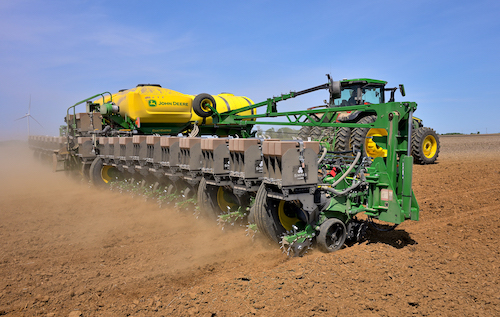Crop Prices: Another Bubble?
The recent spike in crop prices was welcomed with cautiously open arms by retailers interviewed in this report, but the scars of the crash of 2008 are still fresh. A sampling of quotes includes the following:
- “The memory of recent years is pretty vivid, and a lot of people got burned. We managed to make a profit and keep inventory in check, but a lot of people got hurt, and I suspect the same scenario is setting up again.”
- “If $2 or $3 comes off the soy price, we will be sitting here in the same boat as 2008, sitting on a lot of high priced product.”
- “We’re cautiously optimistic but lots of growers don’t trust markets will stay up forever. Then there’s the guy I know at church, asking me about speculating on wheat at 11 dollars. Some people don’t know corn from soybeans, but think they do.”
What ultimately will happen is anybody’s guess, but don’t be surprised if we see a drop as precipitous as the rise says Sano Shimoda, founder and president of BioScience Securities.
Agriculture commodity composites have risen since May, when weather phenomenon began to hamper yields in many parts of the world. Then the USDA revised forecast setting the corn harvest at below earlier projections, sending crop prices into the mid-$5 range. But as weather normalizes and analysts get a better picture of farmers’ planting intentions, prices will begin to descend from their current orbit.
“When you see price curves that look like a rocket taking off, it won’t last,” Shimoda says. “The question is when will that rocket run out of fuel and drop as fast as it goes up … seldom do you see parabolic curves that don’t display the inverse trajectory on the other side.”
Shimoda, who has 30 years of experience as a Wall Street analyst and investment banker, is conversationally calling the his prediction of a commodity price correction “Ag Bubble 2.0.” The first price correction (Ag Bubble 1.0) occurred during 2006-08, when heightened demand and speculative investment drove prices to unprecedented highs, especially for corn, rice and wheat. The result of those price fluctuations — enormous financial loss both for growers and retailers — is a situation no one wants to relive.
Ag Bubble 2.0 has been driven by weather-induced supply shortfalls. These factors, although unpredictable, are somewhat easier to compensate for with robust national food reserves. Currency valuations are also a factor as countries jockey to keep their respective currency valuations low, including the U.S. dollar. A lower dollar translates into more favorable commodity prices, relatively speaking. And the investment community is exacerbating the trend with cash infusions into short-term and long-term investment vehicles.
“Prices will peak somewhere in the next three to six months, depending on whether weather distortions continue,” Shimoda says.
For example, Shimoda continues, in the case of corn and soybeans, further upward price pressures could continue in the short-term, until this year’s U.S. crop (production and inventories) is fully accounted for in the next three months, greater visibility develops over the production potential of crops planted in Argentina/Brazil, the battle for acreage in the U.S. is settled with spring 2011 plantings, and the reality that the La Nina weather pattern fades as expected this spring, resulting in a more normal weather pattern in both North and South America.






